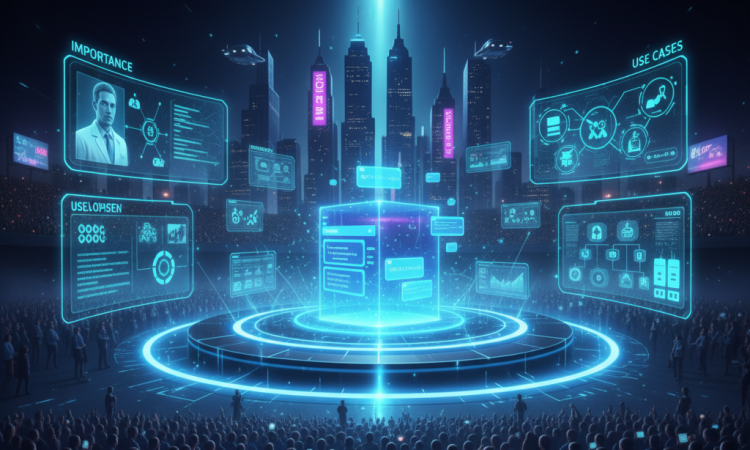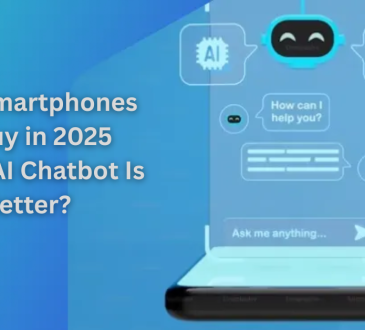
In today’s rapidly evolving digital world, thetechnotrick explores one of the most exciting technological revolutions — No-Code AI. Artificial Intelligence (AI) has always been considered a field for expert programmers and data scientists. However, with the rise of no-code platforms, this powerful technology has become accessible to entrepreneurs, small businesses, and non-technical users. No-Code AI allows anyone to build, deploy, and manage AI models without writing a single line of code, changing the way people interact with technology and innovation.
More Related:
AI-powered smart tools
Earn money online for free
What is No-Code AI?
No-Code AI refers to the creation and deployment of artificial intelligence solutions using visual interfaces rather than traditional coding. These platforms provide drag-and-drop tools, pre-built templates, and automated workflows that make it possible to design smart applications effortlessly.
Instead of learning complex programming languages like Python or R, users can train AI models simply by uploading datasets, defining goals, and letting the platform handle the technical work. This innovation is transforming industries by democratizing access to AI technology — enabling business owners, educators, and creators to harness its power.
The Importance of No-Code AI
No-Code AI is not just a convenience; it’s a revolution in accessibility and speed. Here’s why it’s so important in today’s world:
- Empowers Non-Technical Users
No-Code AI enables business professionals, marketers, and educators to build AI-driven solutions without relying on programmers. This independence accelerates innovation and creativity. - Reduces Development Time
Traditional AI development can take months. No-Code AI tools allow users to create functional prototypes within hours, making experimentation faster and more cost-effective. - Boosts Business Efficiency
With automation and data-driven insights, companies can streamline operations, reduce human error, and improve productivity. - Bridges the AI Skills Gap
The shortage of AI experts is a global challenge. No-Code platforms bridge this gap by allowing non-experts to participate in the AI revolution. - Encourages Innovation Across Industries
From healthcare to education, small startups to large enterprises — No-Code AI fosters innovation by making AI adoption easier and more affordable.
Key Benefits of No-Code AI
Let’s dive deeper into the main benefits that make No-Code AI a game-changer for businesses and individuals alike.
1. Cost-Effective AI Development
Building traditional AI models requires hiring skilled developers and data scientists, which can be expensive. No-Code AI tools reduce these costs by removing the need for specialized technical expertise. This makes AI accessible to startups and small businesses that previously couldn’t afford such technology.
2. Faster Deployment and Time-to-Market
With automated tools, pre-built templates, and drag-and-drop features, No-Code AI significantly reduces development time. Businesses can launch their AI-powered products or services faster, staying ahead of competitors.
3. Scalability and Flexibility
No-Code AI platforms are designed to handle growth effortlessly. As data and usage increase, these tools allow businesses to scale their AI applications with minimal effort. You can adjust workflows, add new features, or integrate APIs — all without coding.
4. Simplified Data Handling
Data management is often a complex task in traditional AI development. No-Code platforms simplify it by automating data cleaning, model training, and performance analysis — enabling users to focus more on results than technicalities.
5. Improved Collaboration
No-Code AI promotes collaboration between technical and non-technical teams. Business analysts, marketers, and developers can work together on shared dashboards, improving communication and project alignment.
6. Lower Risk and Easier Experimentation
Because No-Code AI tools are easy to use and affordable, organizations can experiment more freely without fearing huge financial losses. This encourages creativity and exploration of new ideas.
Popular Use Cases of No-Code AI
No-Code AI is already transforming various sectors. Here are some real-world use cases showcasing its versatility:
1. Customer Support Automation
Many businesses now use AI chatbots and virtual assistants built with No-Code AI platforms. These chatbots handle customer queries 24/7, providing instant responses and freeing up human agents for complex tasks.
2. Predictive Analytics in Marketing
Marketers can leverage No-Code AI tools to predict consumer behavior, optimize campaigns, and identify high-value leads. Platforms like Peltarion and DataRobot enable predictive modeling without programming.
3. Image and Text Recognition
Using drag-and-drop AI solutions, users can create models for image classification, facial recognition, or document scanning. This is useful for security systems, healthcare diagnostics, and content moderation.
4. HR and Recruitment Automation
No-Code AI can analyze resumes, predict employee performance, and automate recruitment workflows. HR teams can save time and ensure fair hiring processes with the help of machine learning models — no coding required.
5. E-Commerce Personalization
Online stores use No-Code AI to offer personalized recommendations, product suggestions, and dynamic pricing. This helps increase sales and improve the customer experience.
6. Education and E-Learning
Educators can create smart tools to track student progress, personalize lessons, and predict learning outcomes — all powered by No-Code AI models that analyze performance data.
7. Healthcare Diagnostics
Healthcare providers can use No-Code AI to detect patterns in medical images, predict disease risks, and assist in early diagnosis — saving time and improving patient outcomes.
8. Financial Forecasting
Banks and fintech companies use No-Code AI for fraud detection, loan approval predictions, and market analysis, allowing them to make better decisions quickly and accurately.
How No-Code AI Development Works
Developing an AI solution without code may sound complex, but it’s surprisingly simple. Here’s a step-by-step breakdown of the process:
1. Define Your Goal
Start by identifying what problem you want to solve — such as predicting sales, automating tasks, or analyzing data trends.
2. Collect and Upload Data
Upload relevant data to your chosen No-Code AI platform. Many platforms offer data import options from Excel, Google Sheets, or databases.
3. Choose a Model Template
No-Code AI tools come with pre-trained models and templates for tasks like sentiment analysis, image recognition, or text classification. Select one that fits your objective.
4. Train the Model
Click “Train” — and the platform automatically handles the heavy lifting: cleaning data, testing algorithms, and optimizing accuracy.
5. Evaluate and Adjust
Review the model’s performance metrics. If results are unsatisfactory, you can tweak inputs or try another model without any coding.
6. Deploy the AI
Once satisfied, deploy the AI model into your app, website, or workflow. Most No-Code platforms provide easy API or web integration options.
7. Monitor and Improve
After deployment, monitor the model’s performance and make improvements as needed. Continuous learning ensures better accuracy over time.
Top No-Code AI Platforms in 2025
Here are some of the most popular and user-friendly No-Code AI platforms available today:
- Google AutoML – Best for developers and businesses using Google Cloud.
- Lobe by Microsoft – Simple interface ideal for image classification.
- DataRobot – Enterprise-level platform offering predictive analytics.
- Peltarion – Great for deep learning models and visual AI workflows.
- Obviously AI – Designed for non-technical users to build predictive models in minutes.
- Teachable Machine – Google’s tool for quick AI model creation without any setup.
- Levity.ai – Helps automate repetitive tasks through custom AI workflows.
Challenges of No-Code AI
While No-Code AI is powerful, it’s not without challenges:
- Limited Customization – Advanced AI tasks might require coding flexibility not available in no-code tools.
- Data Privacy Concerns – Handling sensitive data on cloud-based AI platforms requires caution.
- Dependence on Platform Providers – Users rely on platform updates and support for system functionality.
- Scalability Limits – Some no-code tools may struggle with large-scale enterprise applications.
Despite these challenges, continuous advancements are making No-Code AI more robust and secure each year.
Future of No-Code AI
The future of No-Code AI is promising. As AI tools become more intuitive, we’ll see deeper integration with business software, real-time decision-making, and smarter automation. By 2030, No-Code AI is expected to become a core part of digital transformation strategies across all industries.
The evolution of these tools means that AI will no longer be limited to coders — it will empower everyone, from students to business leaders, to innovate freely. This democratization of AI will likely lead to the creation of millions of intelligent applications that make everyday tasks simpler, faster, and smarter.
Conclusion
In conclusion, No-Code AI represents a major shift in how we build and deploy intelligent systems. It removes barriers to entry, allowing anyone to harness the power of AI for business, education, or creativity. From simplifying workflows to improving customer engagement, No-Code AI is shaping the future of innovation — one click at a time.
As thetechnotrick highlights, embracing No-Code AI today means preparing for a smarter, faster, and more connected tomorrow.
FAQs
Q1. What is the main purpose of No-Code AI?
A. The main purpose is to make AI development accessible to non-programmers through easy-to-use tools and visual interfaces.
Q2. Is No-Code AI suitable for beginners?
A. Yes! Anyone can use No-Code AI platforms — no coding or technical experience is required.
Q3. Can No-Code AI handle complex projects?
A. While it’s ideal for simple to moderate tasks, some advanced projects might still need custom-coded AI solutions.
Q4. What industries benefit the most from No-Code AI?
A. Industries like marketing, healthcare, education, finance, and e-commerce benefit significantly from No-Code AI tools.
Q5. Are No-Code AI tools secure?
A. Most platforms follow strict security protocols, but users should always review data privacy settings and compliance standards.




